Single-Use Plastics 101
Plastic that is made for the trash heap is choking the environment, contaminating our food supply, and driving climate change. We can do something about it.
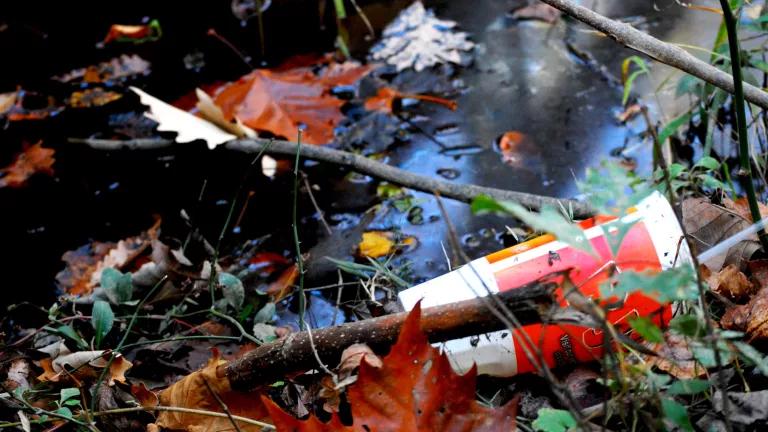
Matt Rath/Chesapeake Bay Program
A straw with our iced coffee, a plastic bag to carry our takeout, a wrapper on a candy bar: Taken individually, each seems harmless. These modern conveniences hardly register in our minds, but they come with a steep environmental price. Our plastics addiction has evolved into a plastics crisis, with impacts on our health, our environment, and even our climate.
Thankfully, by changing some of our habits as consumers—as well as pushing for policy changes at the local and even international levels—we can start to rein it in.
What are single-use plastics?
Single-use plastics are goods that are made primarily from fossil fuel–based chemicals (petrochemicals) and are meant to be disposed of right after use—often, in mere minutes. Single-use plastics are most commonly used for packaging and serviceware, such as bags, bottles, wrappers, and straws.
Though plastic—a chain of synthetic polymers—was invented in the mid-19th century, it wasn’t until the 1970s that its popularity skyrocketed. Manufacturers began replacing traditionally paper or glass staples with lighter, more durable, and affordable plastic alternatives, such as plastic jugs replacing milk jars.
Since the 1950s, the world has produced more than nine billion metric tons of plastics, more than half of which was brought to market after 2000. And we can expect these materials to stick around for thousands of years.
There are many uses for plastic that are not only reasonable but important, such as surgical gloves or straws for people with disabilities. But these cases make up a small fraction of single-use plastic. More than half of non-fiber plastic, which excludes synthetic fabrics like polyester and nylon, comes from plastic packaging alone, much of which is for single-use items.
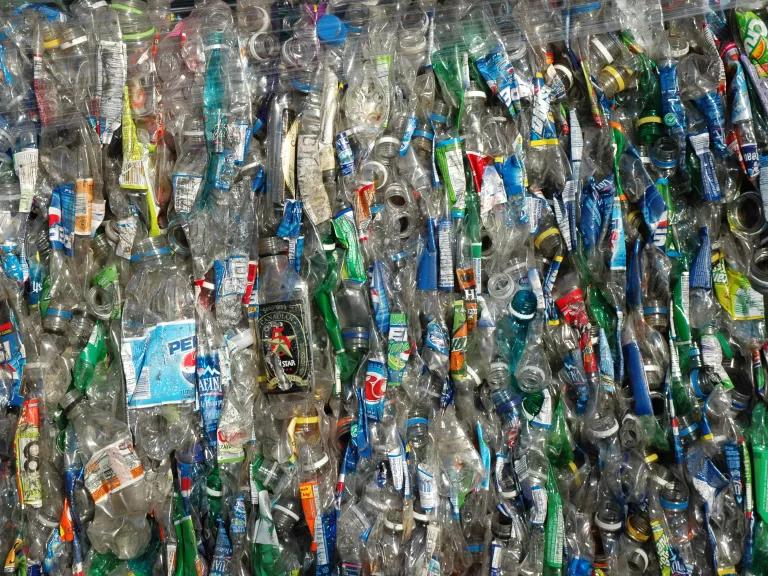
David via Flickr
Why is single-use plastic bad?
Single-use plastics are a glaring example of the problems with throwaway culture. Instead of investing in quality goods that will last, we often prioritize convenience over durability and consideration of long-term impacts. Companies bank on this desire for convenience, selling products wrapped in flashy packaging, which could easily be avoided, or designing cheap goods that only fuel more consumerism.
Our reliance on these plastics means we are accumulating waste at a staggering rate. According to the OECD (Organisation for Economic Co-operation and Development), the world produced more than 460 million metric tons of plastic in 2019—already double the amount produced in 2000.
Plastic litter
The most common types of plastic waste found in the environment are cigarette butts, followed by food wrappers, bottles and bottle caps, shopping bags, straws, and stirrers. And we’re only just beginning to see the widespread presence of small microplastics, which include things like threads that shed from synthetic clothing and the beads and glitter added to personal products.
Reducing plastic use is the most effective means of avoiding this waste. After that, recycle (or compost) what you can, being sure to follow the rules of your municipality, since systems vary widely by location.
Limited recycling
Recycling more plastic, more frequently, reduces its footprint. Polyethylene terephthalate, one of the most commonly recycled plastics and the material that makes up most water and soda bottles, can be turned into everything from polyester fabric to automotive parts.
But the OECD found that a whopping 91 percent of plastic isn’t recycled at all. Some of it (about 19 percent) is incinerated but the vast majority ends up in landfills or in the environment. Single-use plastics in particular—especially small items like straws, bags, and cutlery—aren’t easy to recycle because they fall into the crevices of recycling machinery. Many recycling centers won’t even accept them.
Microplastic pollution
Left alone, plastics don’t really break down; they just break up. Wear and tear and washing, as well as sun and heat, can slowly turn plastics into smaller and smaller pieces until they eventually become what are known as microplastics. These microscopic plastic fragments, no more than 5 millimeters long, are hard to detect—and are just about everywhere. (There are even plastic particles that measure less than a micrometer, known as nanoplastics.) Some microplastics are even small by design, like the microbeads used in facial scrubs or the microfibers in polyester clothing.
These microplastics quite easily end up in the water, on farmland, getting eaten by wildlife, and inside our bodies. They’ve even made their way up to the secluded Pyrenees mountain range and down to the bottom of the Mariana Trench.
For wildlife, microplastics can be particularly dangerous; when eaten, they can easily accumulate inside an animal’s body and cause serious health issues, like punctured organs or fatal intestinal blockages.
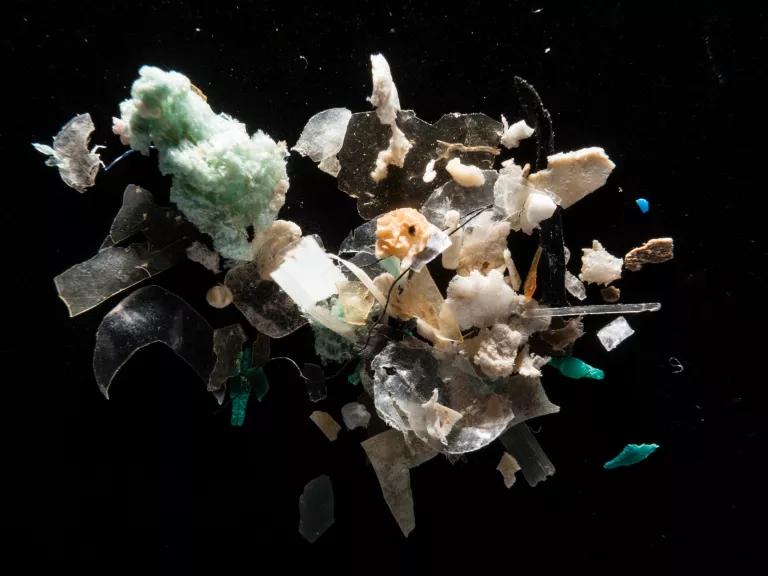
A laboratory photograph of microplastics found in the Corsica River in the Chesapeake Bay watershed of Maryland
Will Parson/Chesapeake Bay Program
Health harms from microplastics
When we ingest microplastics, as well as the chemicals that are added to plastics during processing, we face myriad health risks. Many of the chemicals in plastics are known endocrine disruptors, and research has suggested that human exposure to them could lead to hormonal imbalances, reproductive problems like infertility, and even cancer. The phthalate DEHP, as just one example from dozens, is often added to plastic goods like shower curtains and garden hoses to make them more flexible—but it was also found to be a probable human carcinogen by the U.S. Environmental Protection Agency.
We’re also just beginning to understand how microplastics are contaminating our food supply. One study that examined 16 types of commonly consumed proteins—including beef, shrimp, and tofu—found microplastics present in 90 percent of samples, with higher rates in more processed foods.
Though microplastics have been found throughout the human body, scientists are still unpacking the short- and long-term effects of this contamination.
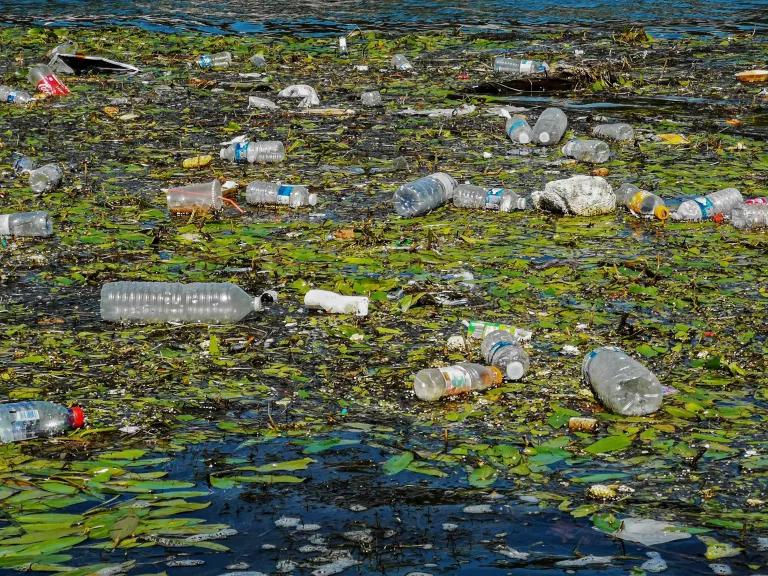
Martin Grimm/Picture-alliance via Associated Press
Single-use plastics and pollution
Although plastic pollution accumulates most visibly on our streets, aquatic ecosystems are also suffering. Plastic litter tossed on the ground is easily washed away by rain, or it travels via storm drains into rivers and streams. It’s estimated that eight million metric tons of plastic make their way into waterways every year—an amount that could triple by 2040 unless the industry changes how plastic is created, used, and disposed.
The majority of this pollution—dominated by single-use plastic waste—comes from countries lacking the infrastructure to properly manage waste, particularly those in Southeast Asia.
But it’s important to remember that waste management is just one part of the global materials cycle. For instance, a lot of the plastic produced in Asian countries is for products that serve U.S. demand—and the United States and other high-income countries often send plastic waste back to these countries for processing.
The sheer amount of plastic waste can inundate communities with pollution. Not only does the waste destroy the land itself, but when plastic is incinerated, which can sometimes be the case, its toxic fumes quickly become a health hazard for nearby residents, leading to everything from skin rashes to cancer. The ash and other toxins released during combustion may travel long distances, spreading these impacts even farther.
Marine animals also bear the burden of this influx of garbage into their habitats, and millions die each year because of plastic entanglement and other impacts. Beached whales have been found with stomachs full of plastic trash—as have dead seabirds, turtles, and many other creatures. In fact, at least 1,565 wildlife species have been found to have accidentally ingested plastic.
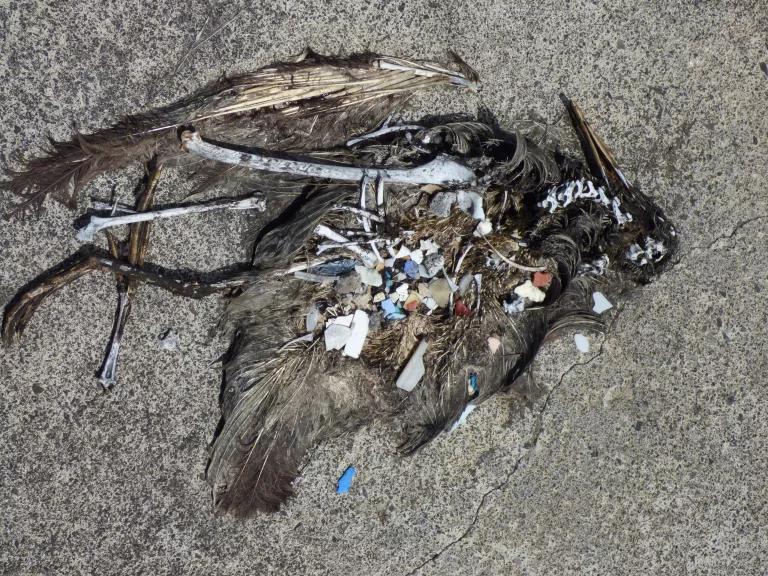
An albatross found dead with a belly full of plastic on Midway Atoll
Forest and Kim Starr via Flickr
Single-use plastics and climate change
Because nearly all plastics (99 percent) are made from fossil fuels, our addiction to plastic also impacts the climate. In fact, the plastics industry (which includes many companies that have invested in or are operating in oil and gas) is currently responsible for four times more greenhouse gas emissions than the airline industry. And even if production were to stay level, plastics are projected to account for 15 to 19 percent of the global carbon budget by 2050.
Plastic production emits greenhouse gases at every point in its life cycle. This begins with the process of drilling for the building blocks of plastic: oil and gas. At the next stage, the industry relies on highly polluting and energy-intensive “cracker plants,” where ethane molecules from natural gas are cracked into the chemical building blocks of plastic. Finally, corporations are trying to sell the public on a greenwashing scheme for plastic’s “end of life” phase—the deceptively named “chemical recycling” process, in which facilities incinerate plastic waste and contaminate the air.
In the United States, many of these polluting facilities—whether they make plastic or burn it—are built in low-income communities and communities of color, which often have the fewest resources to block them. Community-based organizations and groups like NRDC are raising the alarm as the number of these facilities rises, due in part to the unprecedented glut of gas from fracking and liquefied natural gas booms.
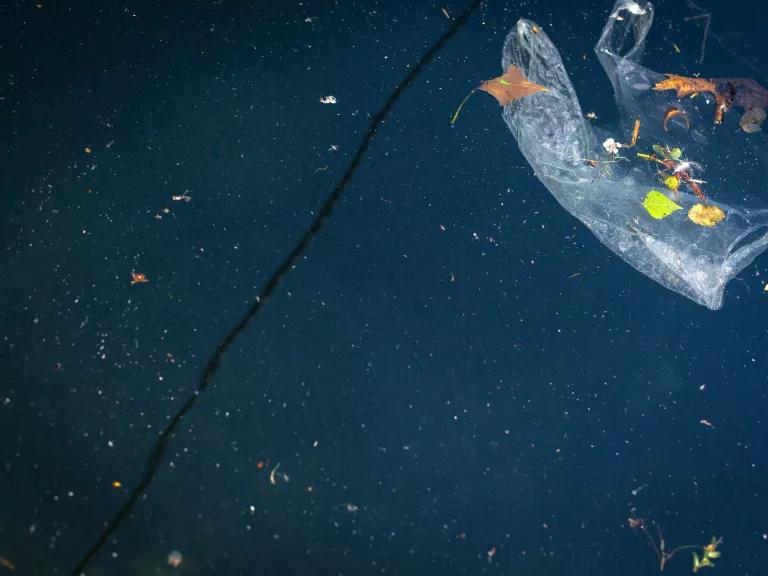
Natasha Chub-Afanasyeva via Flickr
What is the global plastics treaty?
In 2022, 175 nations gathered at the United Nations Environment Assembly to solve the global crisis of plastic pollution. There, the nations agreed to draft a legally binding treaty that would identify actions to reduce the production of plastics, particularly its most toxic forms, by the end of 2024.
We don’t yet know what the final U.N. plastics treaty will contain—or how the United States, one of the world’s biggest contributors to plastic waste, will engage—but we do know that this is an opportunity to block the endless stream of unnecessary single-use plastics into our markets, prevent microplastics from entering our water and food supplies, reduce environmental destruction, and cut greenhouse gas emissions (all popular ideas).
NRDC’s health experts have also been advocating to phase out the most toxic and problematic plastic products, eliminate chemicals of concern, block the expansion of “chemical recycling,” and mandate that manufacturers disclose the chemicals in their plastic products.
Should we ban single-use plastics?
In response to the strain that plastic puts on communities, a wave of single-use plastic bans is sweeping the country and the globe—most often on plastic bags, straws, stirrers, and take-out clamshells. Dozens of U.S. cities and many institutions (from schools to theme parks) have decided to outlaw plastic straws. Plastic bag bans—ideally accompanied by a fee on paper bags—are also catching on, with at least 12 states (and hundreds of cities) having passed such laws so far.
What do the bans accomplish? They prevent millions of tons of plastic from entering the waste stream each year. And when it comes to waste that lasts forever, every ton counts.
But beyond these impacts, the bans have cultural effects. Companies are forced to innovate, rethinking their designs and sourcing sustainable materials. And they help shift consumer mindsets, as people recognize that this waste is both unsustainable—and needless.
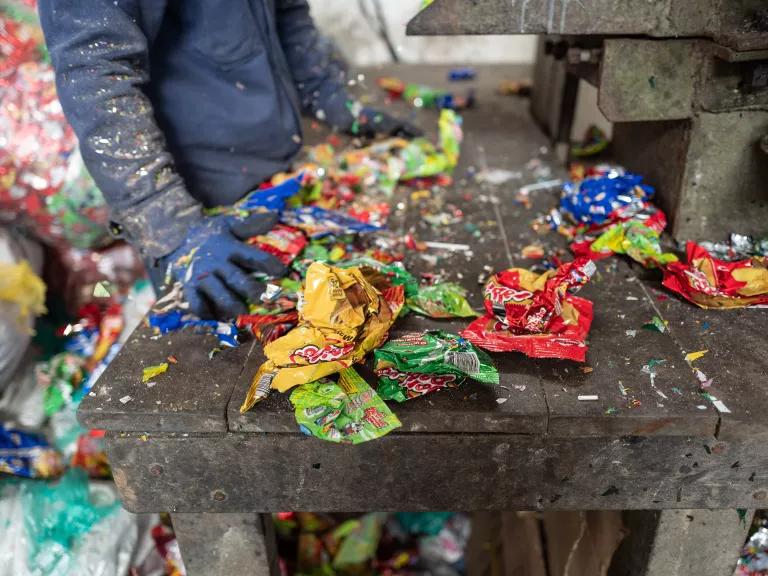
Juan Cristobal Cobo/Bloomberg via Getty Images
Major corporations and single-use plastics
Large producers of single-use plastics can make a big environmental impact. As part of the Break Free from Plastic movement, Greenpeace volunteers conduct annual audits of plastic pollution along coastlines, sifting through hundreds of thousands of individual pieces across 41 countries to identify the pollution’s sources. In 2023, they discovered that Coca-Cola, Nestlé, and Unilever products were found most often.
Coca-Cola on its own produces three million metric tons of plastic packaging each year, equivalent to a terrifying 200,000 plastic bottles per minute. Unfortunately, that number continues to rise, as it does across many global brands.
In response to calls for change and shifting consumer habits, some companies are taking the initiative and experimenting with designs that reduce waste or utilize reusable or compostable components. But it’s clear that much more needs to be done.
Policies and government frameworks, like the forthcoming global plastics treaty, can spur action from private industry. Bottle bill laws, for example—which generally require retailers to add a fee on individual bottles (that customers can partially recoup when they recycle)—are a way to increase corporate responsibility for waste while providing a monetary incentive to consumers to recycle. Even better are incentives that support a zero-waste, circular economy: promoting completely reusable or easy-to-repair components.
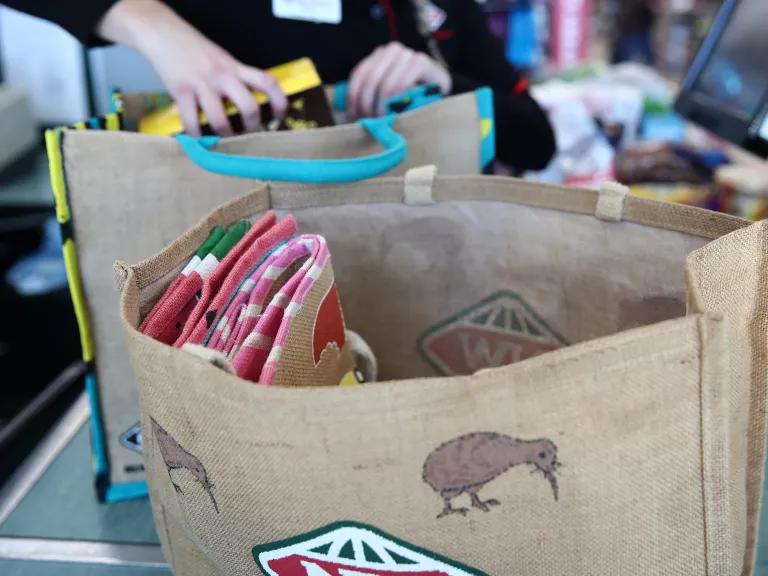
Fiona Goodall/Getty Images
Avoiding single-use plastics
Individual choices—and the collective shifts they bring about—add up quickly. Making just one simple change, like resolving to avoid bottled water whenever possible, can spare the environment of hundreds of plastic bottles each year. Here are a few more tips for ridding your life (and your community) of single-use plastics for good.
- Always pack a reusable bag when shopping. (And yes—reusable totes are better than plastic.)
- Cook more often—and store leftovers in your freezer—to reduce your use of plastic-heavy take-out containers.
- Compost your food waste, which has many benefits, including shrinking your personal waste stream.
- Buy in bulk. Avoid individually packaged goods, like snack packs. Zero-waste shops, which are becoming more popular, even encourage you to bring in and fill your own containers.
- Though buying online sometimes has a lower carbon footprint than shopping in a store (skip the express delivery option, if you can), online shipments are still chock-full of plastic. Your best bet for reducing your footprint and plastic waste? Walk, bike, or take public transit to buy products in person.
- Avoid plastic wrap altogether by storing leftovers in reusable containers. Or try reusable and compostable beeswax wrap as one easy alternative.
- Buy a metal or glass reusable straw. Pack it alongside reusable cutlery for sustainable eating on the go.
- Talk to the owners of the restaurants you frequent. Ask if they have nonplastic alternatives to plastic straws, stirrers, or bags.
- Speak out in support of local plastic bans, whether by calling your local government representative, submitting an op-ed to your city’s newspaper, or simply starting conversations with neighbors.
- Let companies that make your favorite products know that you care about the packaging. Tweet, call, or send letters to these companies to ask them to switch to more durable, recyclable, compostable, renewable, or recycled-content packaging.
This story was originally published on January 9, 2020, and has been updated with new information and links.
This NRDC.org story is available for online republication by news media outlets or nonprofits under these conditions: The writer(s) must be credited with a byline; you must note prominently that the story was originally published by NRDC.org and link to the original; the story cannot be edited (beyond simple things such as grammar); you can’t resell the story in any form or grant republishing rights to other outlets; you can’t republish our material wholesale or automatically—you need to select stories individually; you can’t republish the photos or graphics on our site without specific permission; you should drop us a note to let us know when you’ve used one of our stories.
Plastic pollution has been linked to everything from cancer in humans to death in wildlife.
A strong Global Plastics Treaty could help rid the world of harmful plastics—and as one of the world’s largest producers, the U.S. has a critical role to play.
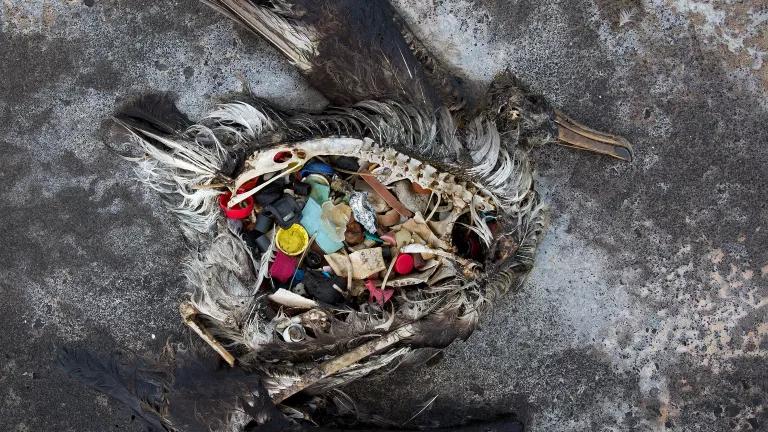
Urge the Biden administration to enact a strong Global Plastics Treaty
Plastic pollution has been linked to everything from cancer in humans to death in wildlife. A strong Global Plastics Treaty could help rid the world of harmful plastics—and as one of the world’s largest producers and consumers of plastic, the United States has a critical role to play.


“Forever Chemicals” Called PFAS Show Up in Your Food, Clothes, and Home
The Particulars of PM 2.5
Mercury’s Journey from Coal-Burning Power Plants to Your Plate